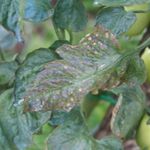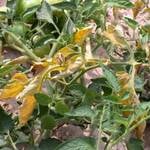
How to Grow Thyme Seeds
Grow Guide #2329
Family: Lamiaceae
Binomial name: Thymus vulgaris
Life Cycle: Perennial
This 'How to Grow' guide details everything a home gardener needs to know to plant, grow and care for Thyme (Thymus vulgaris).
Some species of thyme, such as Creeping thyme (Thymus serpyllum), are different species botanically and are grown as ornamental plants rather than for culinary use. This guide is still relevant as these plants are grown in the same way as thyme.
When to Sow Thyme Seeds
Thyme is a perennial plant that grows year round in most climates. Use the table below to identify the best time of year to sow thyme seeds in your climate.
| JAN | FEB | MAR | APR | MAY | JUN | JUL | AUG | SEP | OCT | NOV | DEC | |
|---|---|---|---|---|---|---|---|---|---|---|---|---|
| Cool | ||||||||||||
| Temperate | ||||||||||||
| Sub-Tropical | ||||||||||||
| Tropical | ||||||||||||
| Arid |
Preparation
Thyme plants are perennial, meaning they live for several years. Choose a permanent position where plants can grow undisturbed by regular digging.
Thyme plants are best grown in full sun. Choose a location that will receive at least 6 hours of full sun each day.
Thyme plants need a very well drained soil. In most cases there is no need to enrich soil with manure or other fertilisers. Prepare soil by weeding it thoroughly and digging it over to loosen it. Keep the area free of weeds until planting. Learn more about preparing soil for planting here.
Thyme plants can be grown in containers. If possible choose a variety that’s recommended for container growing. Use a good quality potting mix and make sure your container is large enough for mature plants; a minimum of 10 litres is recommended for thyme. During the growing season, keep in mind that container grown plants may need additional fertiliser to encourage healthy growth.
How to Sow Thyme Seeds
Thyme seeds do not require any treatment (eg soaking, stratification) before sowing.
Thyme seeds grow best when they are raised in trays or other containers and transplanted to the garden once established.
- Fill trays, punnets or jiffy pots with a good quality seed-raising mix, or use soil starter pellets.
- Sow seeds 3mm deep.
- Keep soil moist but never wet or dry.
- Seeds should germinate in around 14-21 days at a soil temperature of 18-21°C.
- Transplant seedlings to the garden once they have their first true leaves and are large enough to handle (usually 5-10cm tall).
- Plant out, spacing plants 25cm apart.
Tip: Thyme seeds are quite small. Handle them carefully to avoid them blowing away or being washed away. Mix seeds with sand or fine potting mix prior to sowing or use a seed dispenser, damp toothpick or tweezers to help space them evenly. Press lightly into the surface after sowing so that the seeds make good contact with the soil. Take extra care to make sure seeds and seedlings don’t dry out. Read more about sowing small seeds here.
Optional: In cool climates thyme seeds can be sown indoors 6 weeks before the last expected frost. Grow them in a warm position with plenty of natural light.
How to Grow Thyme
Thyme plants are drought tolerant once established and grow best in soil that is dry and very well drained. Let the soil dry out between watering, and only water when the soil is dry about 10cm below the surface (test this by scratching away a little soil with your finger), even in summer. Water deeply in the early morning or late afternoon. Avoid watering the leaves of plants to avoid fungal diseases. Learn more about watering here.
If soil was well prepared no extra fertiliser should be necessary. In poor soil or to give your plants an extra boost, application of a balanced fertiliser or one formulated for fruit and vegetables can be beneficial:
- Apply slow release fertiliser at the recommended rate when transplanting or when seedlings are 5-10cm tall.
- Apply liquid fertiliser at the recommended rate and frequency while plants are fruiting or flowering.
When plants have finished flowering prune them back to neaten them and encourage strong new growth. Using sharp secateurs or snips, cut individual stems just above a set of lower leaves.
How to Harvest Thyme
Thyme should be ready to harvest in approximately 70-90 days.
Thyme is ready to harvest when the stems have grown long enough to pick, and can be harvested as needed. Harvest by pinching off the outer stems and leaves, leaving some on the plant for future growth. Thyme leaves can be left on their stems and stored short term in a perforated plastic bag in the fridge. For longer term storage leaves or stems can be dried, frozen or preserved in oil.
Common Problems when Growing Thyme
Like all plants, thyme is susceptible to some pests, diseases and other problems. Below is a list of the most common problems gardeners encounter when growing thyme plants:
 Downy mildew is a fungal disease that causes yellow to grey-brown patches on leaves, especially the undersides. Water plants at soil level (not on the leaves), remove and destroy affected leaves and do not overcrowd plants to ensure adequate air flow. If problems persist, spray with a homemade milk spray or fungicide.
Downy mildew is a fungal disease that causes yellow to grey-brown patches on leaves, especially the undersides. Water plants at soil level (not on the leaves), remove and destroy affected leaves and do not overcrowd plants to ensure adequate air flow. If problems persist, spray with a homemade milk spray or fungicide. Fusarium wilt and verticillium wilt are diseases caused by soil-borne fungi. The fungi enter a plants’ roots and prevent water and nutrients from moving through plants. Leaves and branches will wilt, dry off and die and leaves may yellow. There is no cure for wilt but choosing resistant varieties, disposing of affected plants and soil, practicing good garden hygiene and crop rotation will all help to prevent it spreading.
Fusarium wilt and verticillium wilt are diseases caused by soil-borne fungi. The fungi enter a plants’ roots and prevent water and nutrients from moving through plants. Leaves and branches will wilt, dry off and die and leaves may yellow. There is no cure for wilt but choosing resistant varieties, disposing of affected plants and soil, practicing good garden hygiene and crop rotation will all help to prevent it spreading.


.png)






